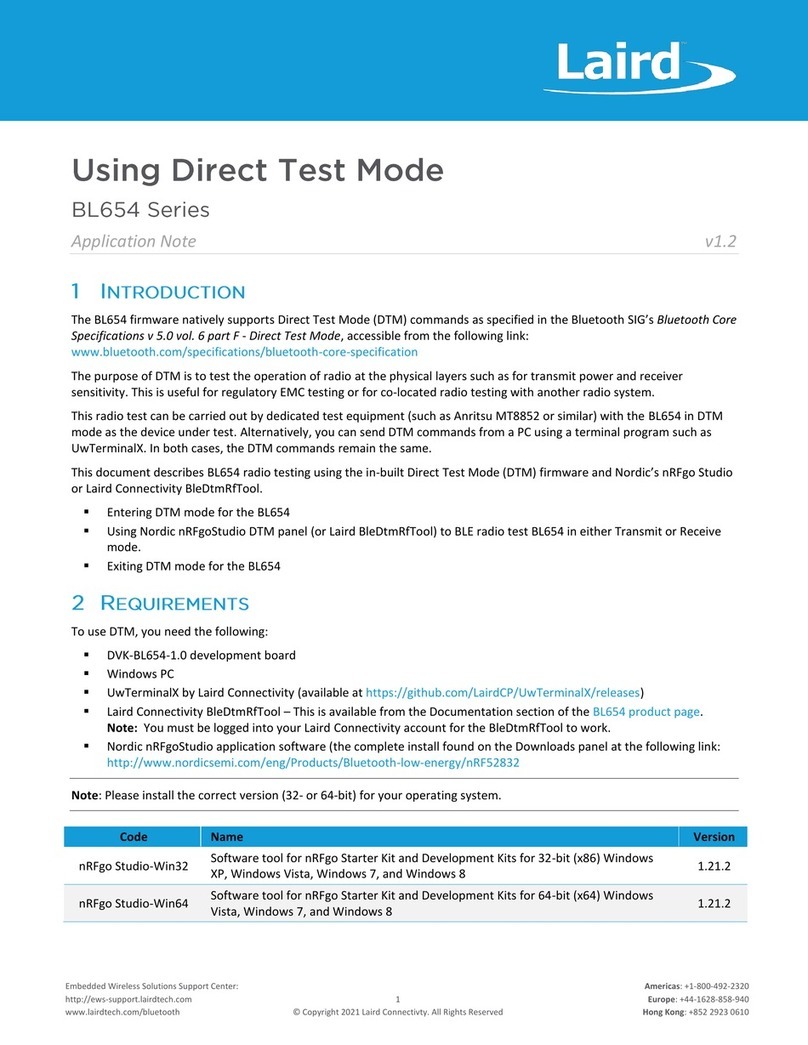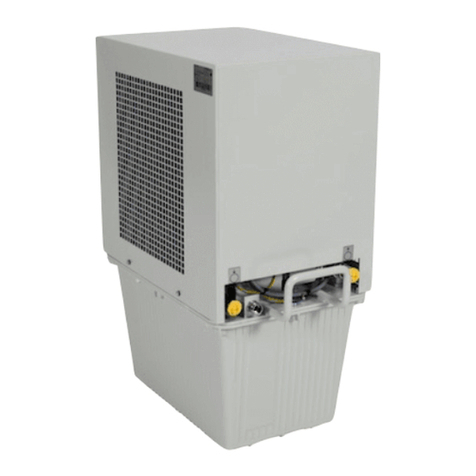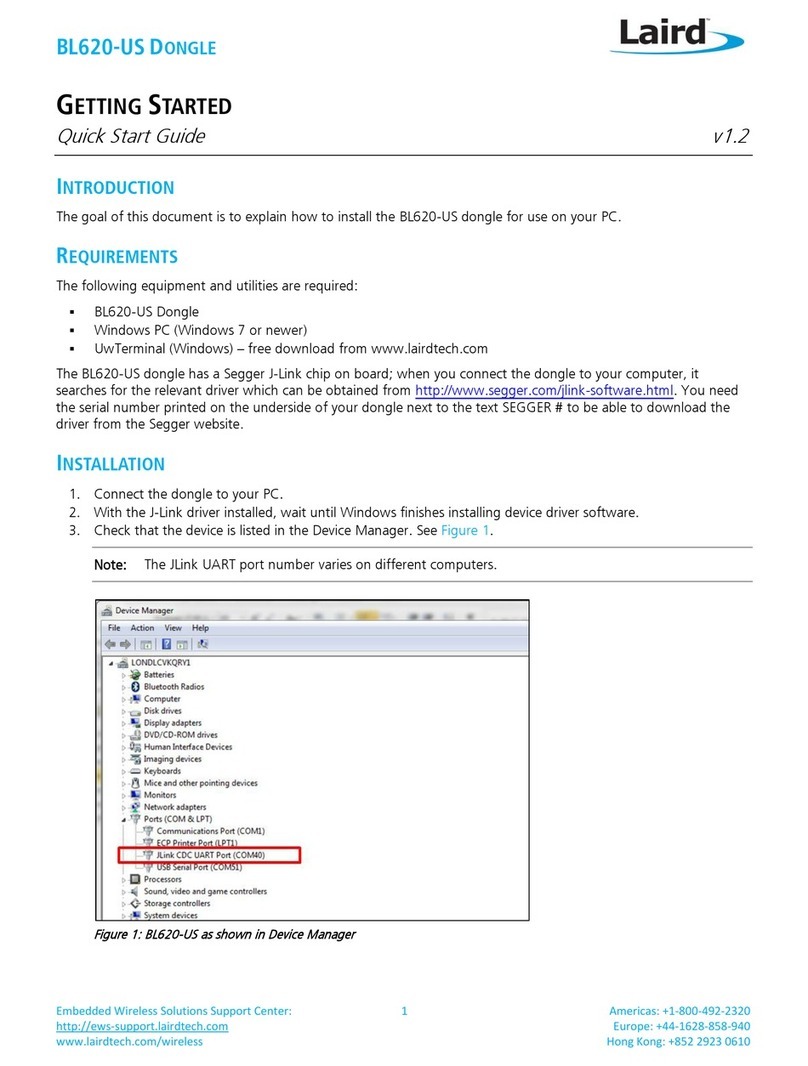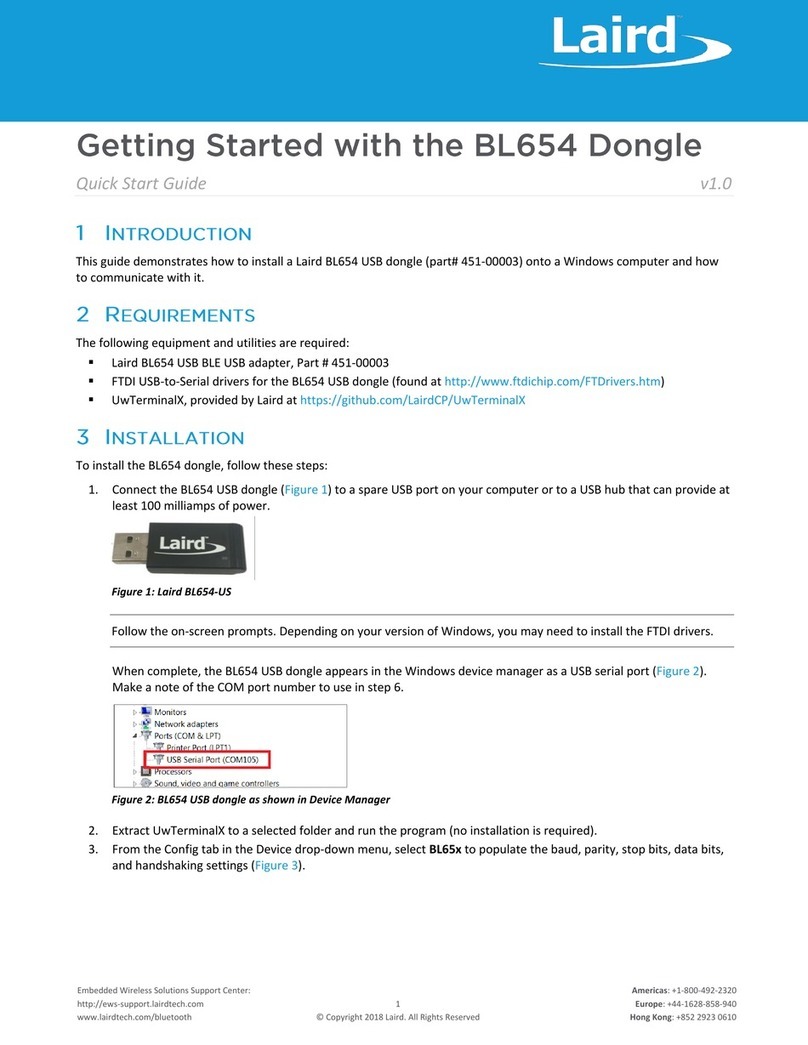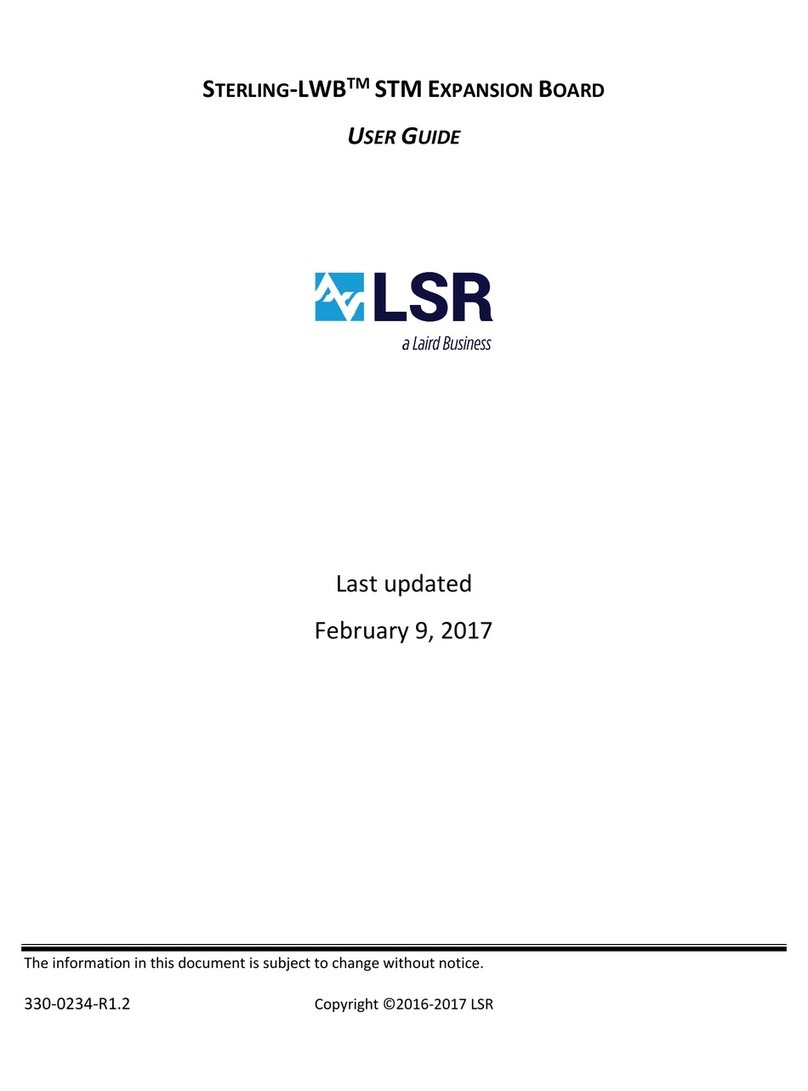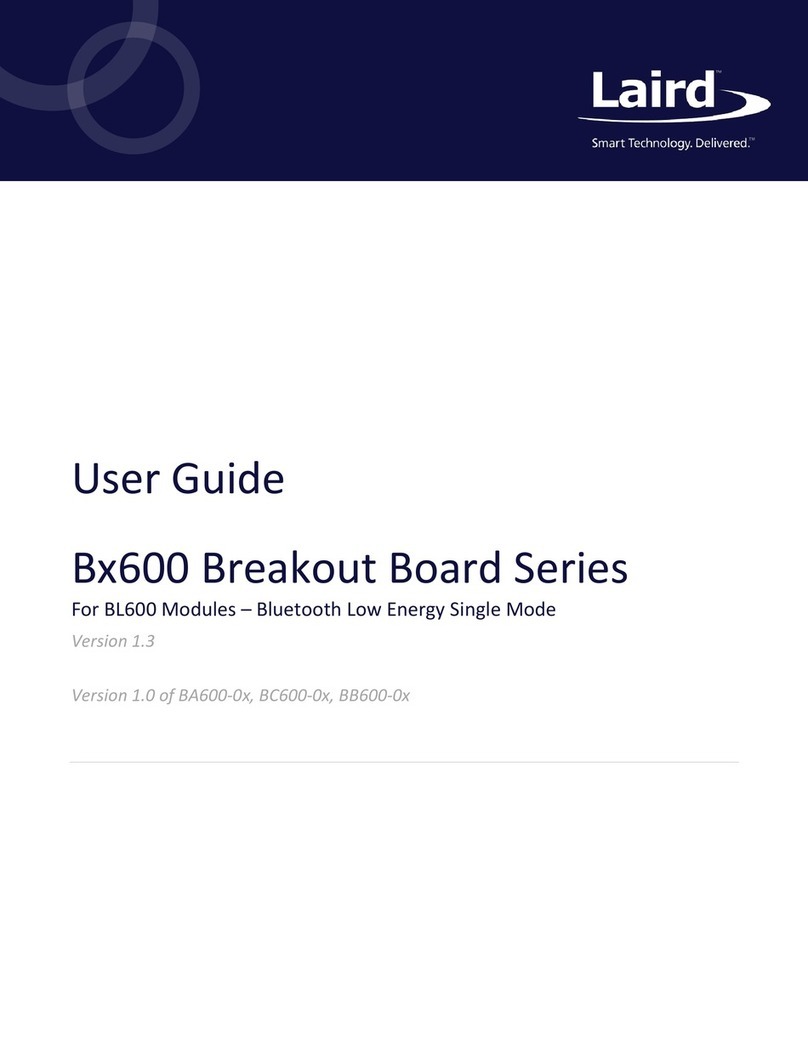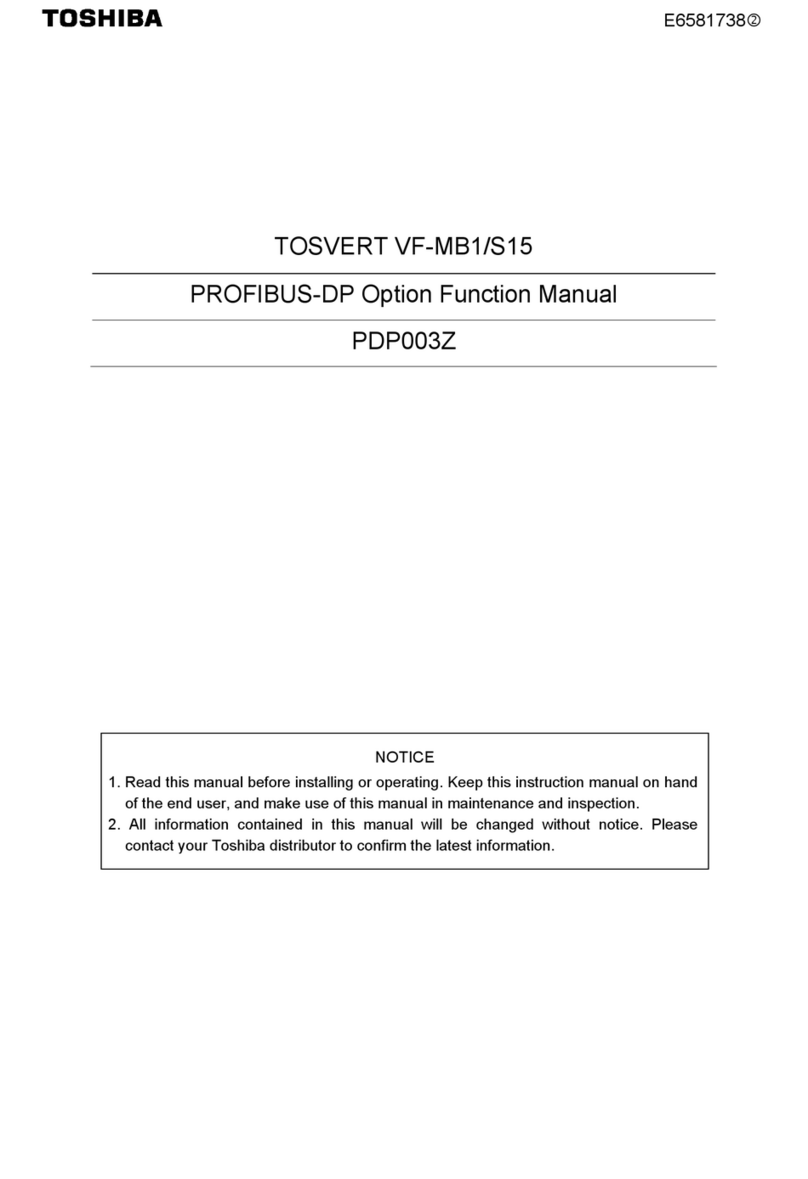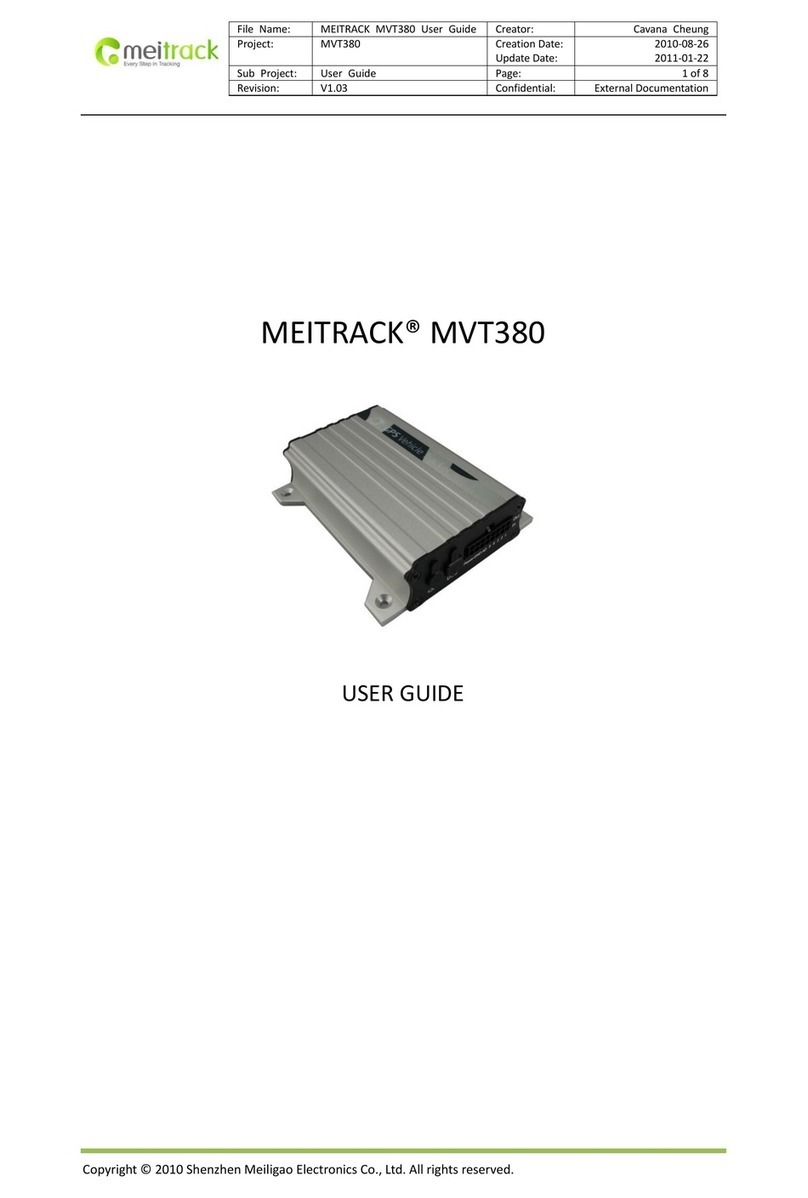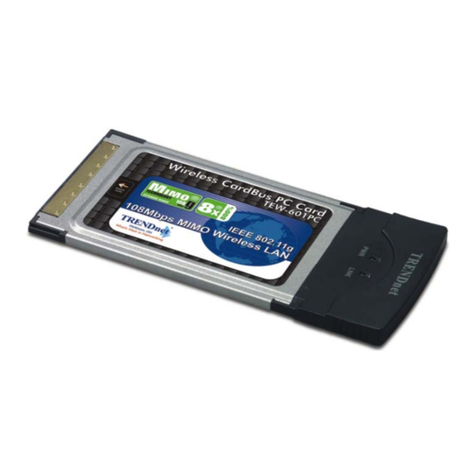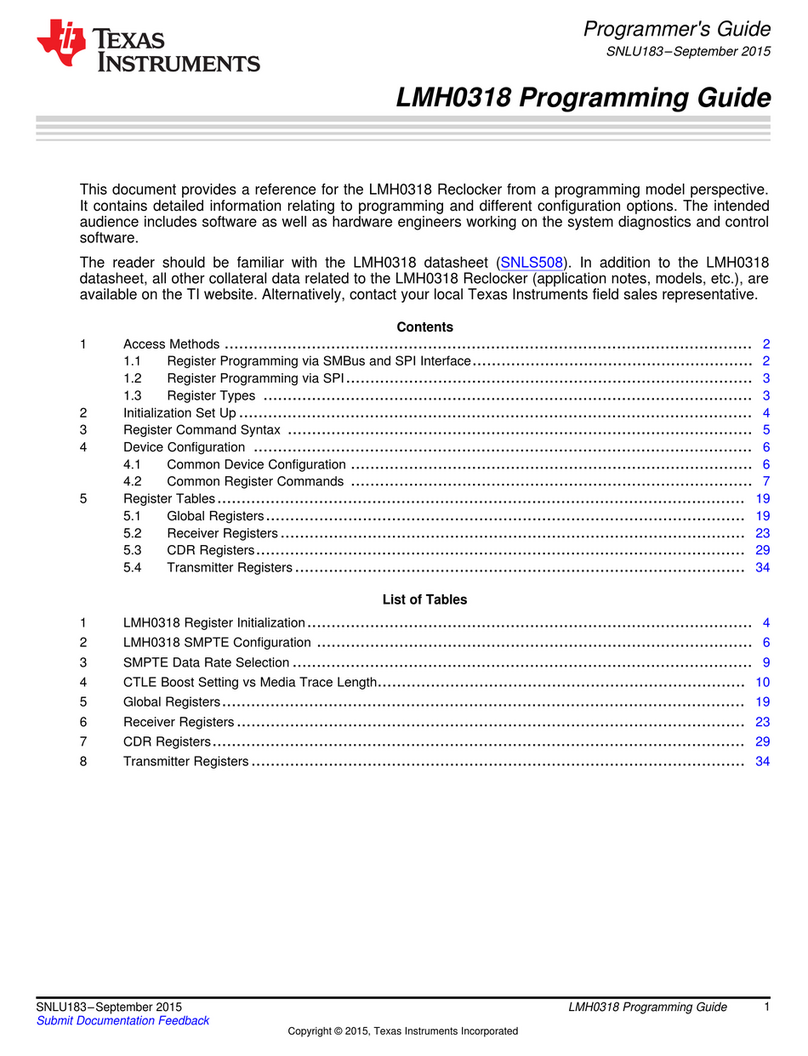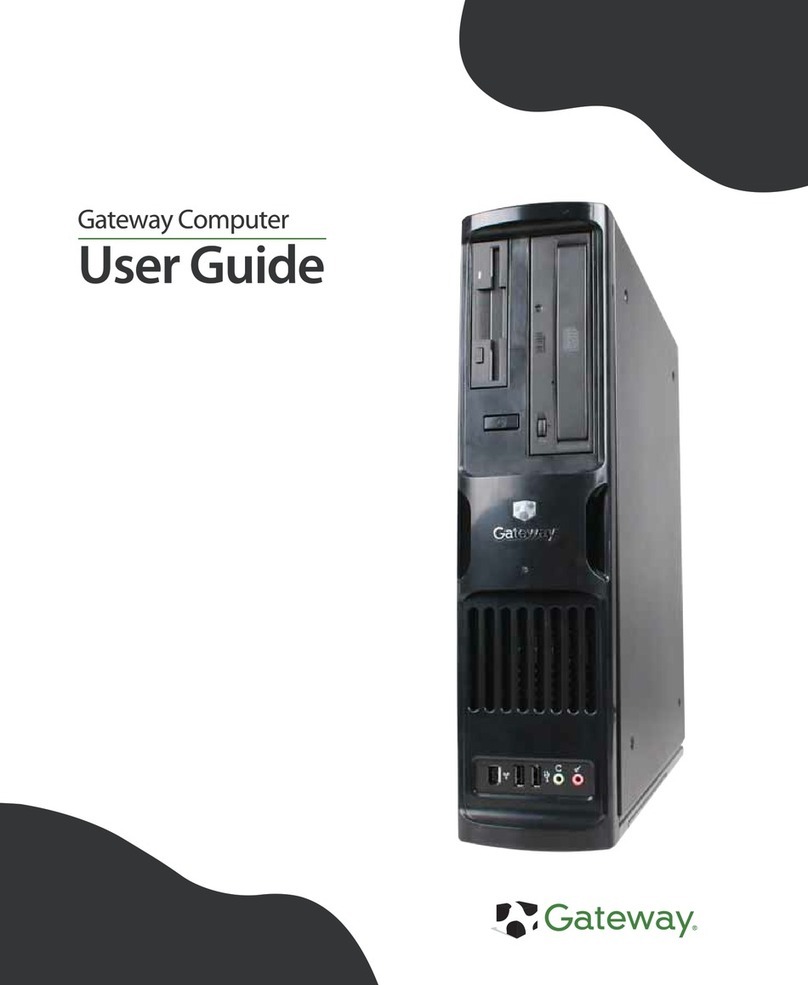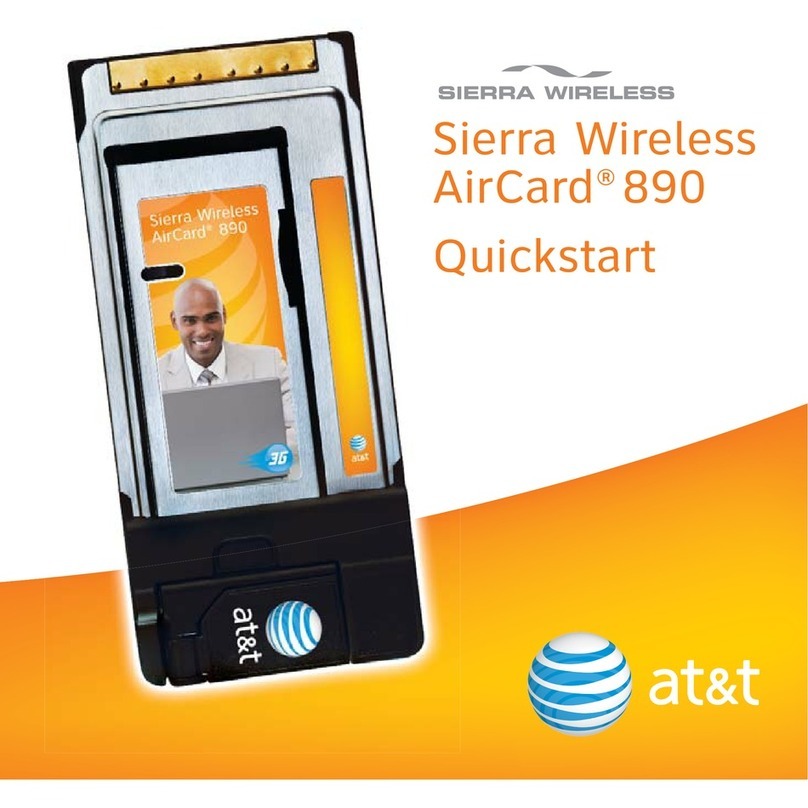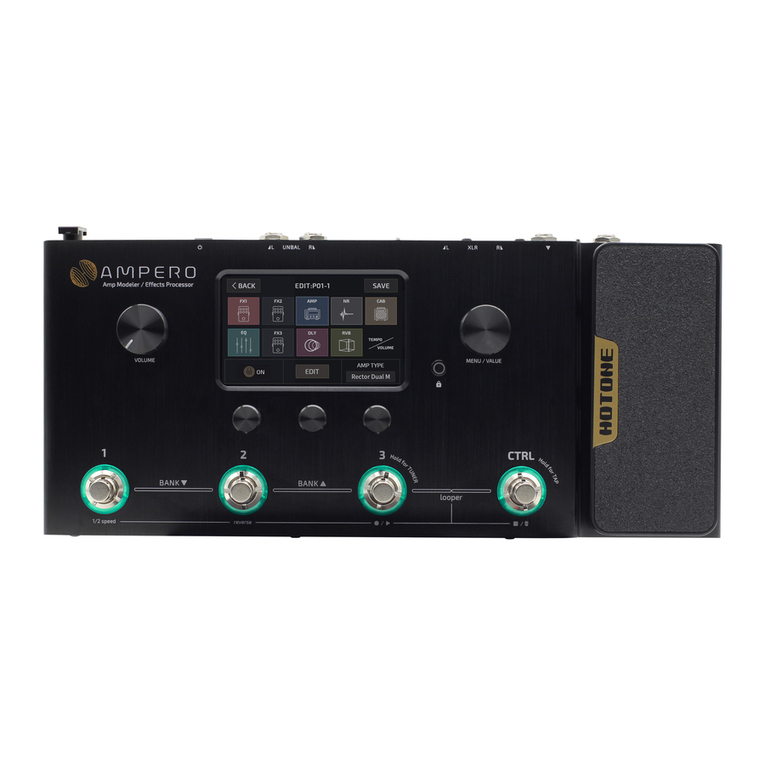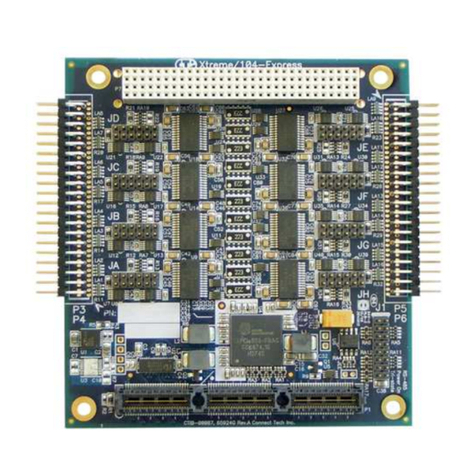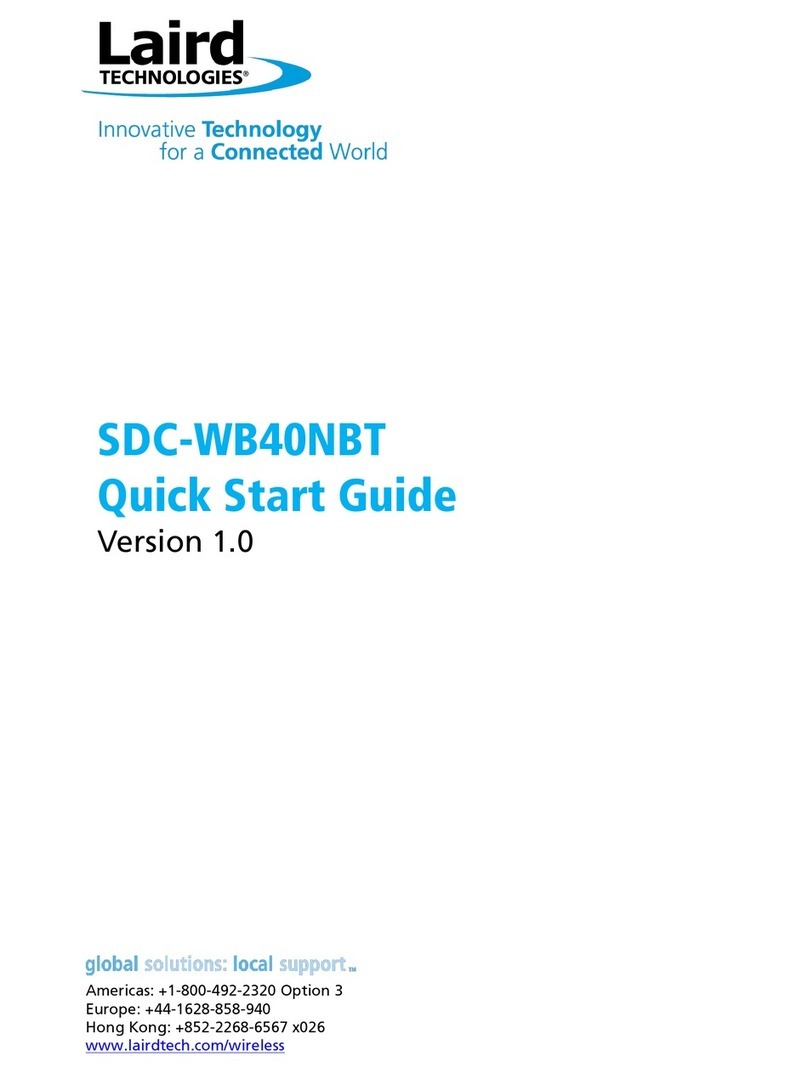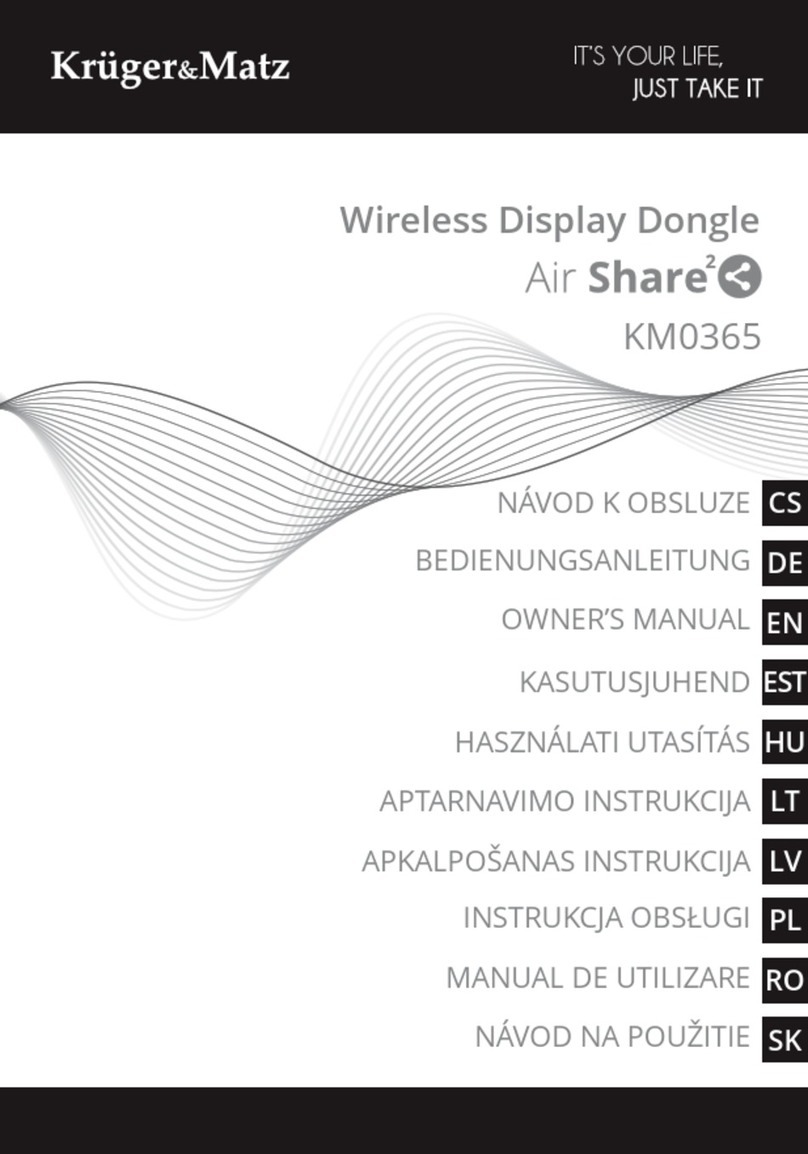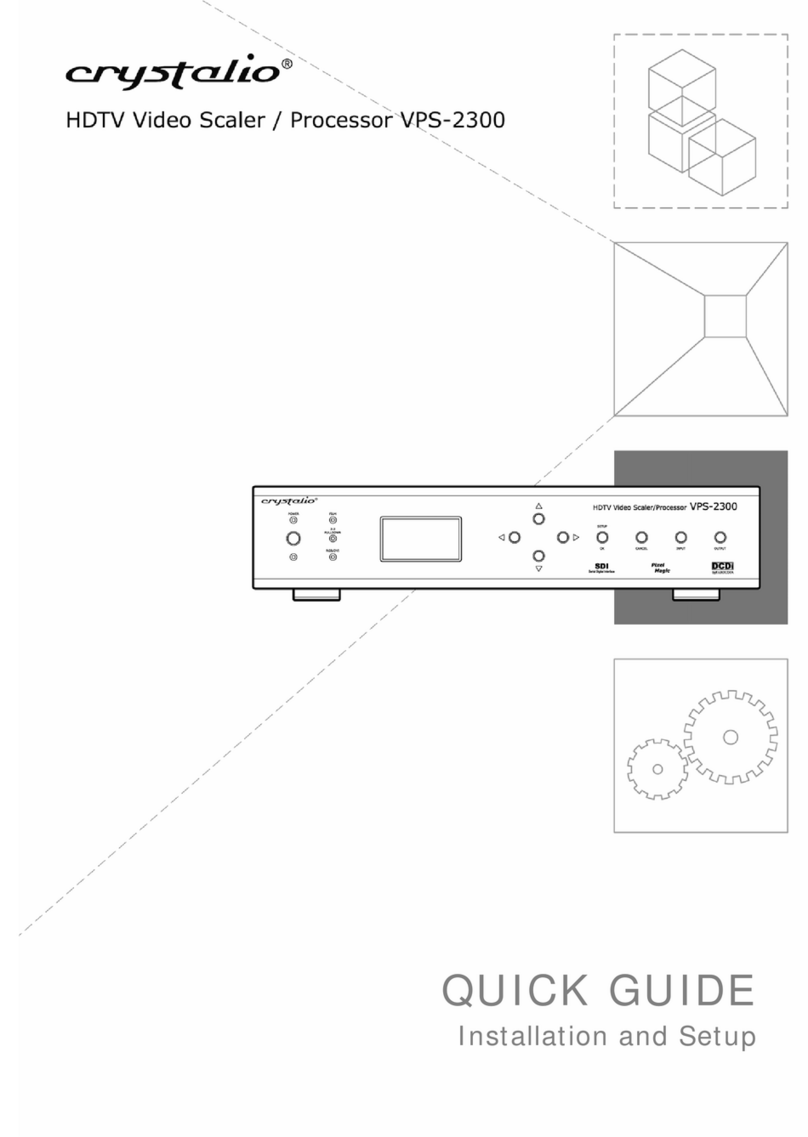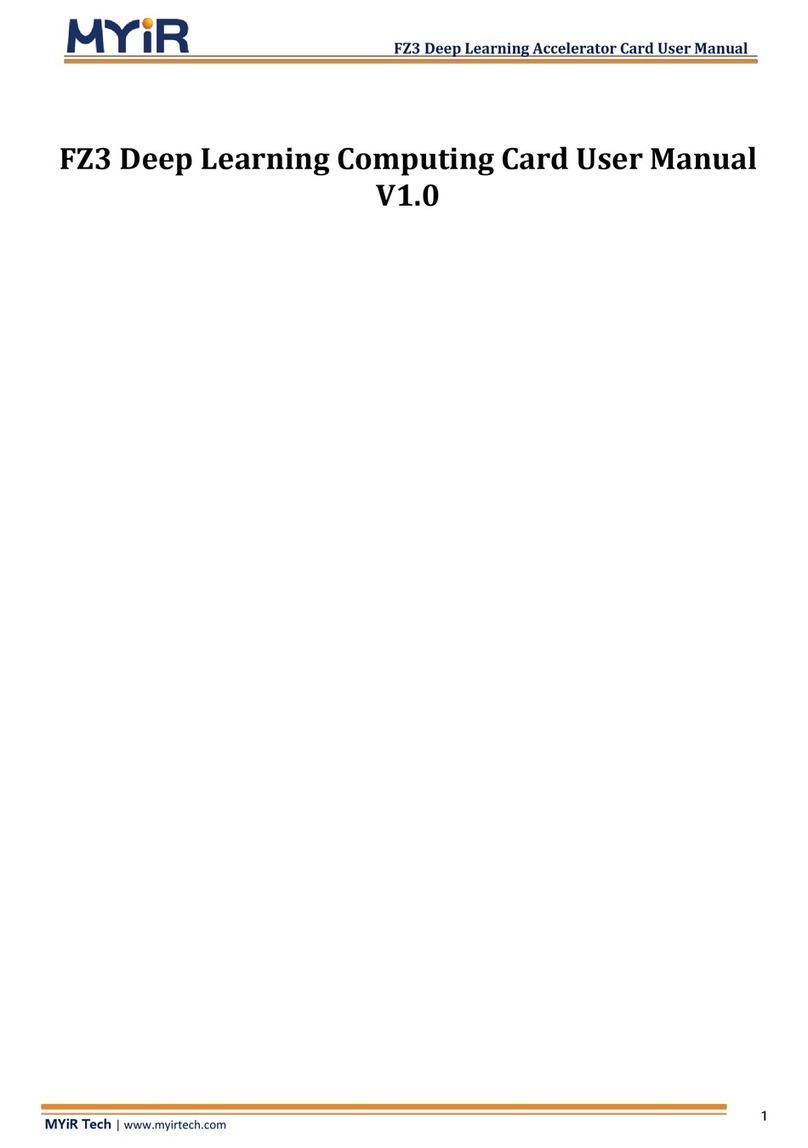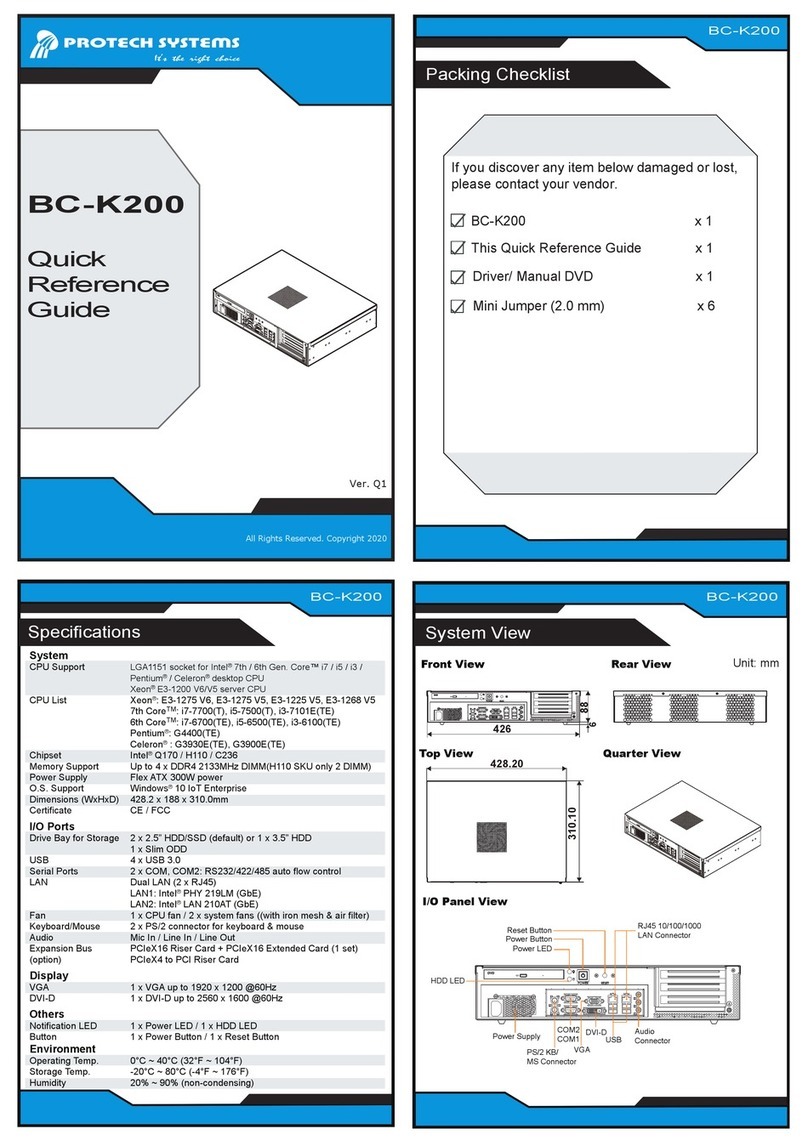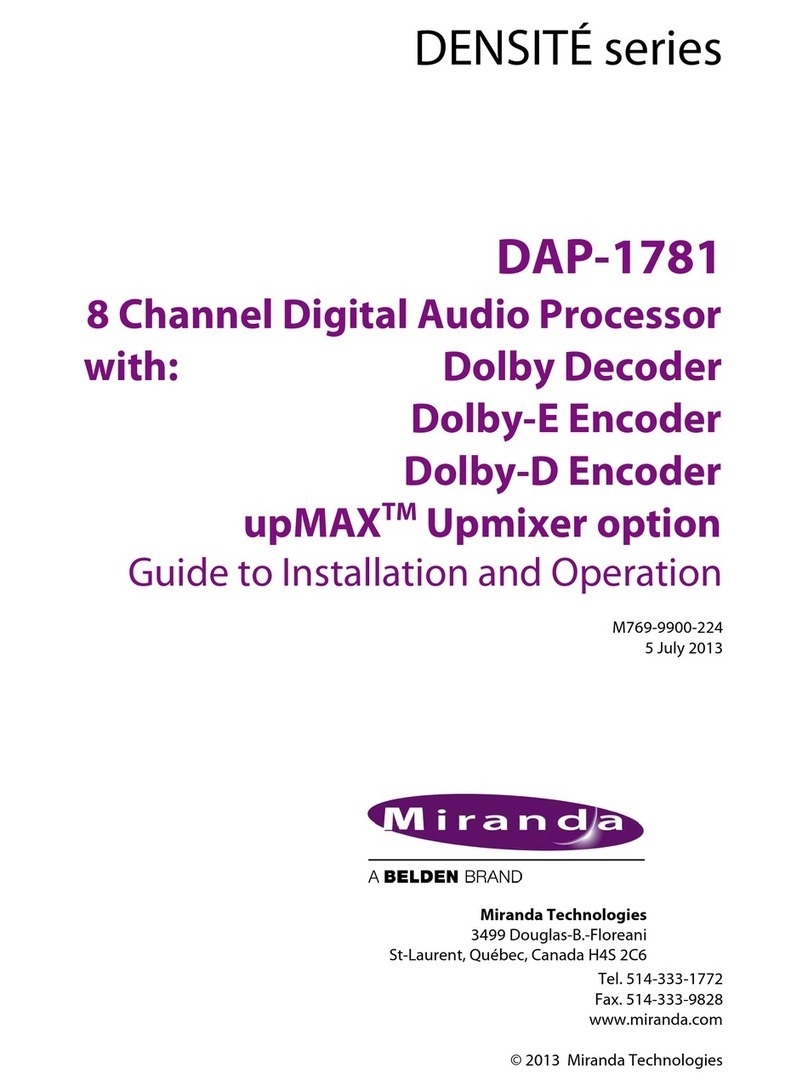
9
www.lairdtech.com
Laird Technologies
BTM430/431
Bluetooth® AT Data Module
AT COMMAND SET
REFERENCE
This document describes the protocol used to control and congure the BTM430 and BTM431 Bluetooth Data
Modules.
The protocol is similar to the industry standard Hayes AT protocol used in telephony modems which is appropriate
for cable replacement scenarios, as both types of devices are connection oriented. The telephony commands
have been extended to make the Laird Technologies device perform the two core actions of a Bluetooth device,
which is make/break a connection and Inquiry. Many other AT commands are also provided to perform ancillary
functions, such as, pairing, trusted device database management and S Register maintenance.
Just like telephony modems, the Laird Technologies device powers up in an unconnected state and will only
respond via the serial interface. In this state the Laird Technologies device will not even respond to Bluetooth
Inquiries. Then, just like controlling a modem, the host can issue AT commands which map to various Bluetooth
activities. The command set is extensive enough to allow a host to make connections which are authenticated
and/or encrypted or not authenticated and/or encrypted or any combination of these. Commands can be saved,
so that on a subsequent power up the device is discoverable or automatically connects.
The device has a serial interface which can be congured for baud rates from 1200 up to 921600, and an RF
communications end point. The latter has a concept of connected and unconnected modes and the former will
have a concept of command and data modes. This leads to the matrix of states shown below.
RF Unconnected RF Connected
Local Command Mode OK OK
Remote Command Mode ILLEGAL OK
Data Mode ILLEGAL OK
The combinations, ‘Data and RF Unconnected Mode’ and ‘Remote Command and RF Unconnected Mode’ do
not make sense and will be ignored.
Navigation between these states is done using the AT commands which are described in detail in subsequent
sections.
Assumptions
The following assumptions are made:-
1. All commands are terminated by the carriage return character 0x0D, which is represented by the string
<cr> in descriptions below this cannot be changed.
2. All responses from the Laird Technologies device have carriage return and linefeed characters preceding
and appending the response. These dual character sequences have the values 0x0D and 0x0A
respectively and shall be represented by the string <cr,lf>.
3. All Bluetooth addresses are represented by a xed 12 digit hexadecimal string, case insensitive.
4. All Bluetooth Device Class codes are represented by a xed 6 digit hexadecimal string, case insensitive.
5. All new Bluetooth specic commands are identied by the string +BTx, where x is generally a
mnemonic of the intended functionality.
AT Command Set Syntax
<bd_addr> A 12 character Bluetooth address consisting of ASCII characters ‘0’ to ‘9’, ‘A’ to ‘F’ and ‘a’ to ‘f’.
<devclass> A 6 character Bluetooth device class consisting of ASCII characters ‘0’ to ‘9’, ‘A’ to ‘F’ and ‘a’ to ‘f’.
N A positive integer value.
M An integer value which could be positive or negative, which can be entered as a decimal value or
in hexadecimal if preceded by the ‘$’ character. E.g. the value 1234 can also be entered as $4D2
<string> A string delimited by double quotes. E.g. “Hello World”.
The “ character MUST be supplied as delimiters.
<uuid> A 4 character UUID number consisting of ASCII characters ‘0’ to ‘9’, ‘A’ to ‘F’ and ‘a’ to ‘f’.
